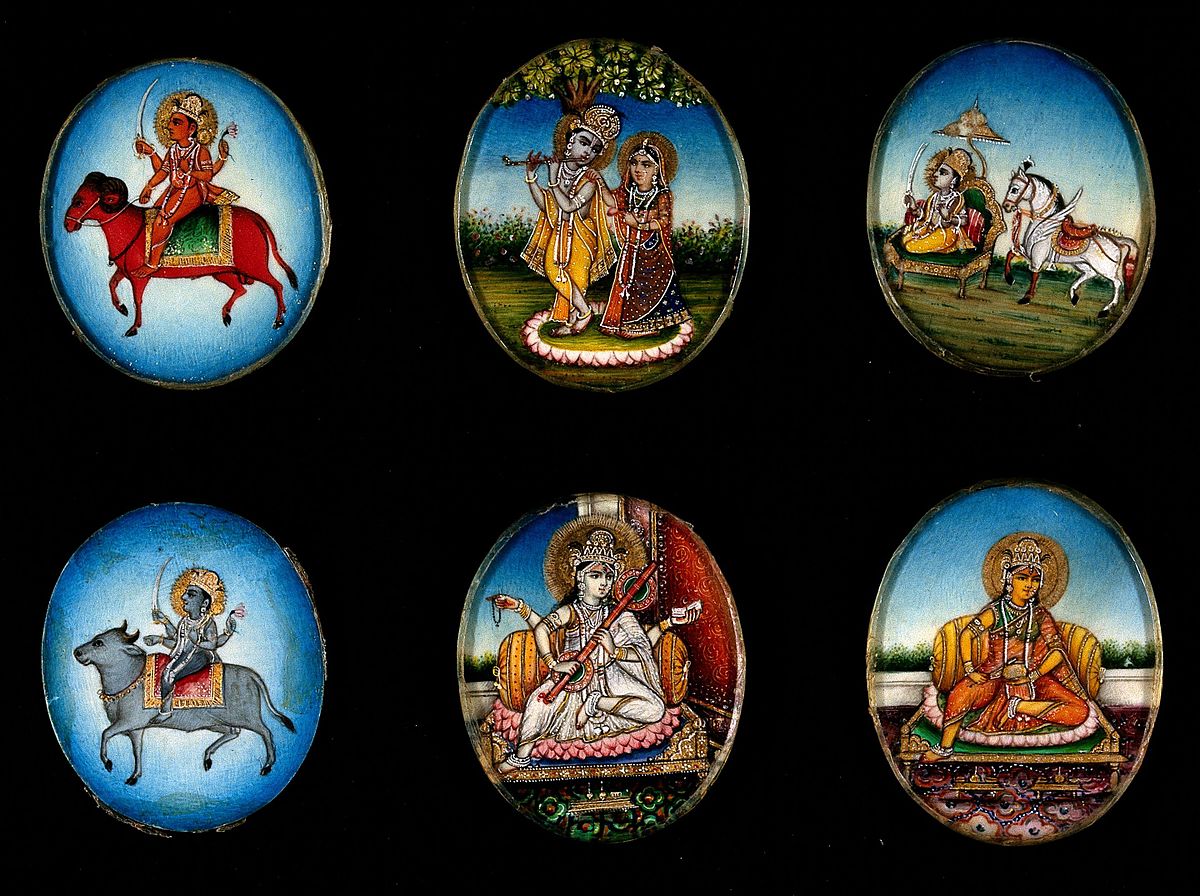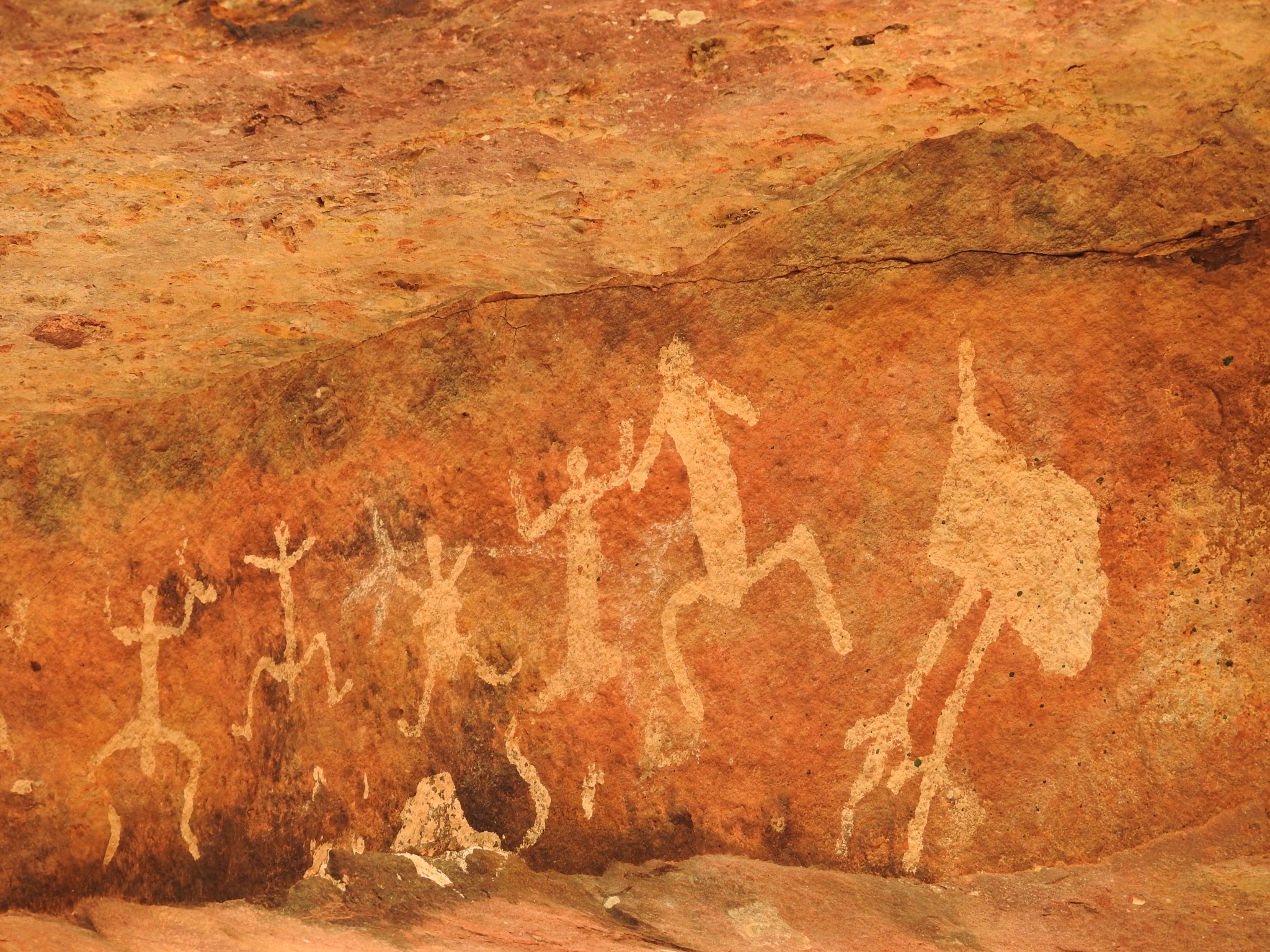1 Introduction to World Mythology
“Like science and technology, mythology, as we shall see, is not about opting out of this world, but about enabling us to live more intensely within it.”—Karen Armstrong, A Short History of Myth
Who are we? Why are we here? What is our purpose in life? The work of constructing meaning in our lives is a uniquely human task. When you think of mythology, you may think about ancient gods and goddesses, or heroes from some distant past. But in fact, myths continue to shape our modern lives in profound ways. Mythology is the study of story. It is a guide to what makes us human. This brief lecture will provide an overview of the cultures we will study in our course.
Best-selling author Karen Armstrong, who wrote A Short History of Myth, shared some thoughts on God with Minnesota Public Radio’s Kerri Miller. Armstrong created the Charter for Compassion, for which she won the TED Prize.
Four Approaches: Polytheism, Monotheism, Animism, and Non-theism
The word “mythology” comes from two Greek words, mythos (meaning story) and logos (meaning the study of something). Mythology, then, is the study of story.
Mythology and religion are intertwined. In this class, we will study several cultures and their myths. The world’s cultural myths revolve around four basic approaches to deity: polytheism, montheism, animism, and non-theistic belief systems.
Polytheism
Polytheism is a religious belief system in which multiple deities or gods are worshiped, venerated, or acknowledged. In polytheistic religions, these gods are often associated with different aspects of nature, human emotions, or various spheres of influence. Polytheistic faiths can be found in various cultures and regions throughout history including the following cultures we will study in our course:
- Ancient Egypt. The ancient Egyptians worshiped a pantheon of gods and goddesses such as Ra (the sun god), Osiris (god of the afterlife), Isis (goddess of fertility and motherhood), and many others.
- Ancient Greece and Rome. The ancient Greeks and Romans believed in numerous gods and goddesses, including Zeus/Jupiter (king of the gods), Hera/Juno (goddess of marriage), Poseidon/Neptune (god of the sea), Athena/Minerva (goddess of wisdom and war), and others.
- Norse Mythology. The Norse people of Scandinavia believed in a complex pantheon, including Odin (the All-Father), Thor (god of thunder), Freyja (goddess of fertility), and Loki (the trickster god), among others.
- Hinduism (India). Hinduism is a complex religion with a vast pantheon of gods and goddesses, including Brahma (the creator), Vishnu (the preserver), Shiva (the destroyer), Lakshmi (goddess of wealth), Saraswati (goddess of knowledge), and many more.
- Yoruba (Africa). Central to Yoruba religion is the worship of Orishas, who are regarded as intermediary spirits between humans and the supreme deity, Olodumare or Olorun. The Orishas represent various aspects of life and nature and are associated with specific powers, elements, or phenomena.
- Maya and Aztec. The Maya and Aztecs of Mesoamerica worshiped a pantheon of gods. We will learn about the Framer, the Shaper, and the Heart of Sky when reading Michael Bazzett’s translation of the Mayan creation myth, The Popul Vuh. Aztec gods include Huitzilopochtli (god of war), Quetzalcoatl (feathered serpent god), and Tlaloc (rain god), among others.

Top center: Krishna and Radha, playing the flute in the garden. Gouache painting by an Indian artist.
Bottom center: Saraswati, the Hindu goddess of learning and knowledge and the wife of Brahma.
Bottom right (?): Lakshmi, the goddess of wealth and prosperity and the wife of Lord Vishnu.
This image is licensed CC BY 4.0, Wellcome V0047492.jpg
Monotheism
Monotheism is a religious belief system centered around the worship or belief in a single, supreme deity or god. In monotheistic religions, there is an emphasis on the unity and singularity of the divine, and all religious devotion and rituals are directed towards this one ultimate being. Some monotheistic cultures we will encounter in our course include the following:
- Judaism. One of the oldest monotheistic religions, Judaism believes in the worship of Yahweh, the God of the Hebrew Bible (Old Testament). It is the foundational belief system of the Jewish people.
- Christianity. Based on the life and teachings of Jesus Christ, Christianity is a monotheistic religion that worships the one God as the Holy Trinity, comprising God the Father, God the Son (Jesus), and God the Holy Spirit.
- Islam. The followers of Islam are monotheistic and believe in Allah as the one and only God. Their sacred text is the Quran, and they follow the teachings of the prophet Muhammad.
- Zoroastrianism. Zoroastrianism is one of the world’s oldest monotheistic religions, founded in ancient Persia. It worships Ahura Mazda as the supreme deity and promotes the struggle between good and evil.
Sikhism (15th century) and the Baha’i Faith are also monotheistic, but we will not be studying these religions in our course.

Animism
Animism is a belief system that attributes a spiritual essence or soul to all living beings, as well as to natural phenomena like plants, animals, rocks, rivers, mountains, and even inanimate objects. In animistic beliefs, everything in the world is thought to possess consciousness, and there is an interconnectedness between all living and non-living entities. This concept is commonly found in traditional and indigenous societies. We will learn more about animism through studying the myths of these cultures:
- Indigenous Peoples of North and South America. Many Native American tribes, such as the Navajo, Hopi, Lakota, and Inuit, have animistic beliefs. They hold a deep reverence for nature, believing that all elements of the natural world, including animals and plants, have spiritual significance and should be treated with respect.
- African Traditional Religions. Numerous African ethnic groups have animistic beliefs deeply embedded in their cultures. These beliefs involve the veneration of ancestors, spirits of nature, and sacred sites.
- Shinto (Japan). Shinto, the indigenous religion of Japan, incorporates animistic elements, with the belief in kami, which are spirits or deities associated with natural phenomena and ancestors.
- Australian Aboriginal Spirituality. Aboriginal Australian cultures are known for their animistic beliefs, considering all natural objects and creatures to be infused with spiritual power, known as Dreamtime or Dreaming.
- Traditional Chinese Religion. Traditional Chinese religious practices often involve animistic elements, including the veneration of ancestors and spirits of nature.
- Traditional Polynesian Religion. Before the introduction of Christianity, many Polynesian cultures held animistic beliefs, attributing spirits and powers to various aspects of the natural world.

Non-theistic Belief Systems
We will also explore the myths of Buddhism (a non-theistic major world religion) as well as considering some modern scientific texts, including the Big Bang Theory, as myths (in the sense that they are stories that explain things).
Your Belief Systems
What do you think? Do you subscribe to any particular belief system? Why or why not? In this course, you’ll be challenged to think about the stories that shape meaning in your own life, while also learning about the power and universal nature of myths such as the hero’s journey, also called the monomyth.

What you learn in this course should be fun, but it also has real-world applications in the workplace. Knowing how to tell the right story is an important skill; in business, for example, we could say that storytelling is just another word for marketing. As historian Noah Yuval Harari notes in his book Sapiens: A Brief History of Humankind, ““F]iction has enabled us not merely to imagine things, but to do so collectively. We can weave common myths such as the biblical creation story, the Dreamtime myths of Aboriginal Australians, and the nationalist myths of modern states. Such myths give Sapiens the unprecedented ability to cooperate flexibly in large numbers” (25).
But myths are more than that. You are more than a personal brand or a cog in a corporate machine. The stories we love teach and reinforce our cultural values. They explain what matters to us and give our lives meaning. This is an important time to think about the stories that matter most to you.

